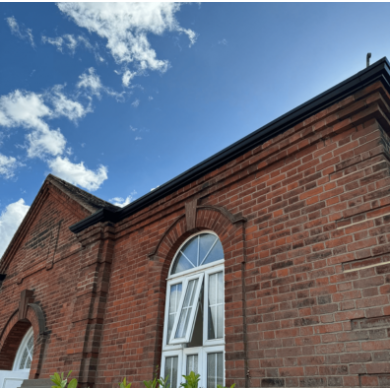
When planning a rainwater system, gutters might not be the first thing that comes to mind – but they play a vital role in protecting your property from water damage. Without them, rainwater would cascade off your roof, saturating walls, foundations, and landscaping. Over time, this can lead to damp problems, erosion, and even structural damage.
Choosing the right gutter profile is more than a matter of style. The profile affects:
- Hydraulic performance – how much water the system can move in a given time.
- Aesthetics – whether it blends seamlessly with your building’s architecture.
- Maintenance and longevity – some profiles are easier to clean and maintain than others.
At Gutter Centre, we supply all the major profiles used across the UK, including Half Round, Box, Ogee, Deepflow, and Moulded. This guide explores their history, technical performance, pros and cons, and the types of buildings where each is most effective.
Why Gutter Profiles Matter
A gutter’s job is simple: to collect water from the roof and carry it away safely into downpipes and drains. But how effectively it does this depends on its shape.
- Shallow, decorative profiles may look attractive but can struggle in heavy rainfall.
- Deep, angular profiles handle more water but can look bulky or industrial.
In the UK, with its mix of heritage properties, modern builds, and variable rainfall patterns, choosing the right gutter profile is about balancing form and function.
A Brief History of Gutter Profiles
- Roman era: The earliest gutters were stone troughs and lead-lined channels.
- Medieval period: Cast lead and timber gutters became common on churches and large houses.
- Industrial Revolution: Cast iron half-round and ogee profiles were mass-produced, setting the standard for heritage architecture we still see today.
- 20th century: Aluminium, galvanised steel, and later uPVC introduced lightweight alternatives with new profiles like box and deepflow.
Understanding this evolution helps explain why certain profiles are linked with heritage authenticity while others are associated with modern efficiency.
Half Round Gutters – The All-Rounder
Profile & Performance
Half round gutters are shaped like a semicircle. Their smooth, curved design encourages fast water flow and natural self-cleaning.
- Flow rate: A 112mm aluminium half round gutter typically carries around 0.9 litres/sec per metre with one downpipe.
- Jointing: Usually clipped or bolted; easy to install.
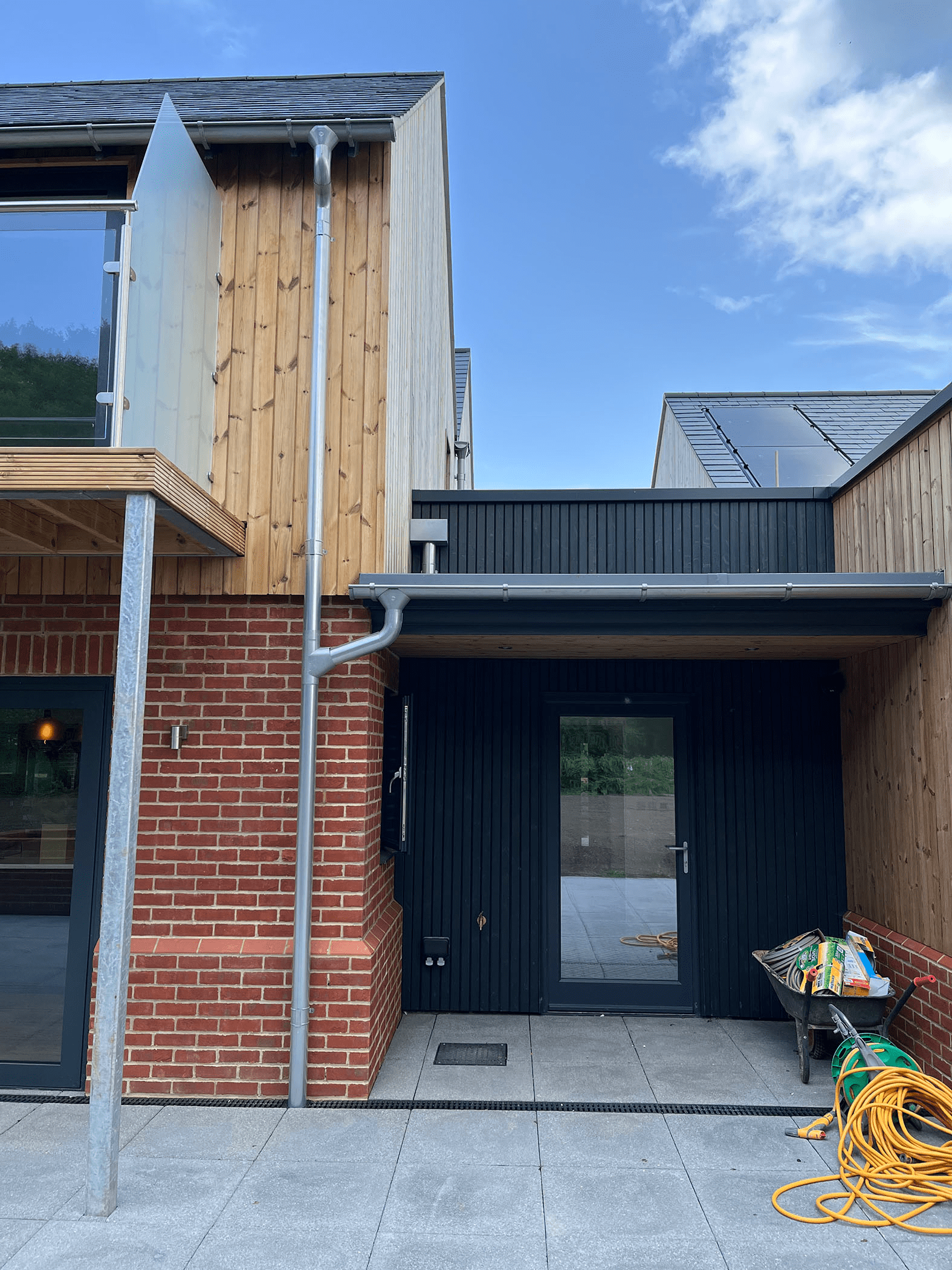
The Pros
- Timeless, versatile, and widely available.
- Heritage-approved, often required on listed buildings.
- Easy to clean with minimal debris build-up.
The Cons
- Capacity is limited compared to deeper systems.
- May struggle on large or steeply pitched roofs.
Best Applications
- Standard residential homes.
- Period cottages and listed buildings.
- Projects where simplicity and tradition are priorities.
Gutter Centre Options
Box Gutters – Modern and Angular
Profile & Performance
Box gutters have square or rectangular profiles, maximising internal capacity. They often integrate with fascia boards for a neat, minimalist look.
- Flow rate: A 100mm x 75mm aluminium box gutter can handle up to 1.2 litres/sec per metre, depending on roof pitch.
- Jointing: Welded or sealed; requires precision to prevent leaks.
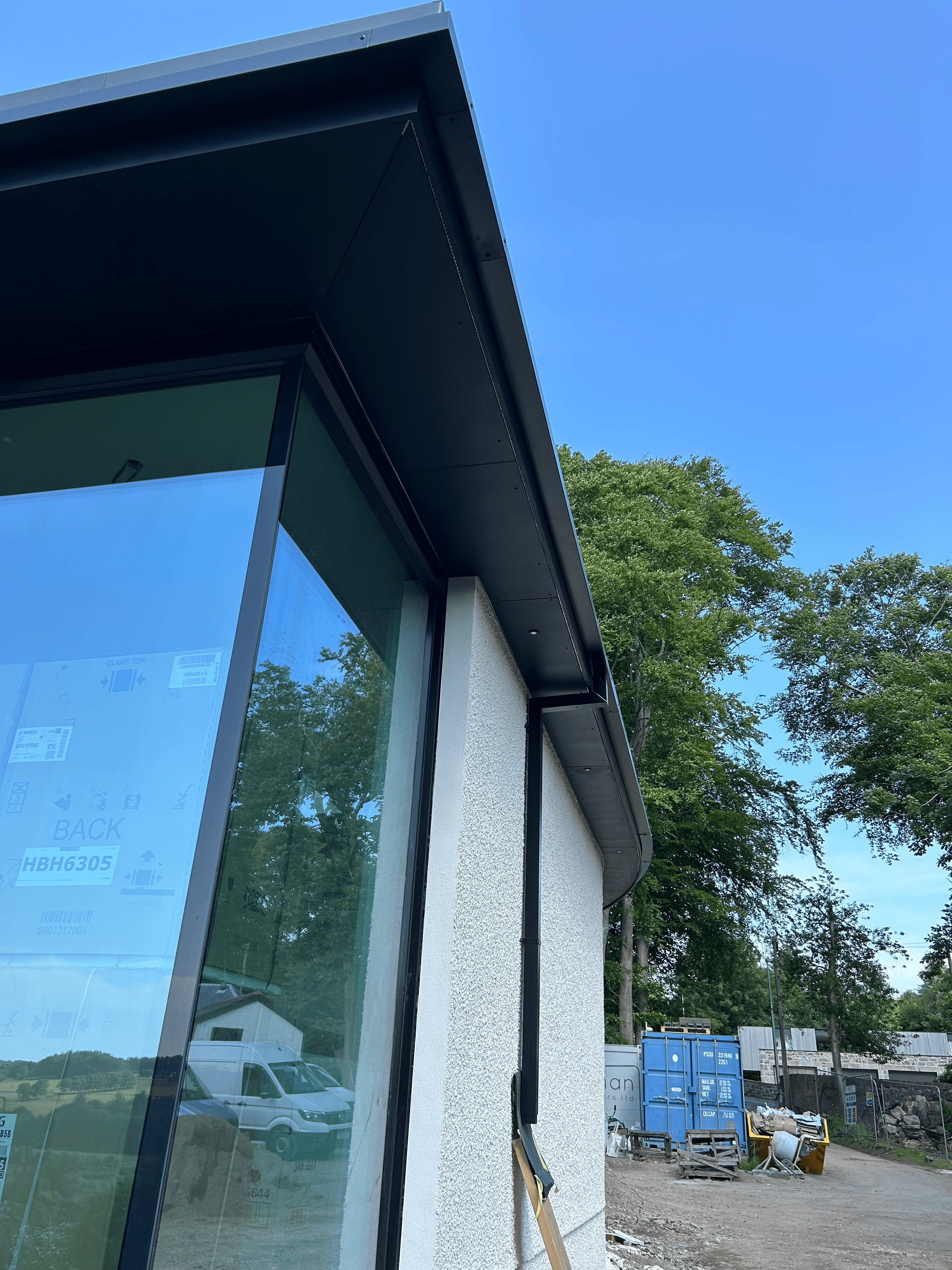
The Pros
- High capacity relative to size.
- Sharp, modern appearance.
- Ideal for flat roofs and contemporary builds.
The Cons
- Corners can pool water if installation isn’t precise.
- It can look too industrial on heritage homes.
Best Applications
- Modern homes with angular architecture.
- Commercial and industrial buildings.
- Low-pitch or flat roofs.
Gutter Centre Options
Ogee Gutters – Decorative Tradition
Profile & Performance
Ogee gutters feature a decorative, notched curve that became popular during the Victorian era. Their profile provides more capacity than half round of the same nominal width.
- Flow rate: A 115mm ogee aluminium gutter can carry 1.2–1.4 litres/sec per metre.
- Jointing: Clip or bolted, depending on material.
The Pros
- Decorative profile enhances period properties.
- Higher capacity than half round.
- Available in cast iron, aluminium, and uPVC.
The Cons
- A more complex shape can trap debris.
- Style may clash with ultra-modern designs.
Best Applications
- Georgian, Victorian, and Edwardian homes.
- Heritage restorations where style matters.
- Projects requiring both performance and kerb appeal.
Gutter Centre Options
Deepflow Gutters – Heavy-Duty Rain Management
Profile & Performance
Deepflow gutters are essentially deeper half round systems designed to cope with heavy rainfall and larger roof catchments.
- Flow rate: A 115mm deepflow aluminium gutter can manage up to 1.8 litres/sec per metre.
- Jointing: Clip-fit for uPVC, bolted for cast iron/aluminium.
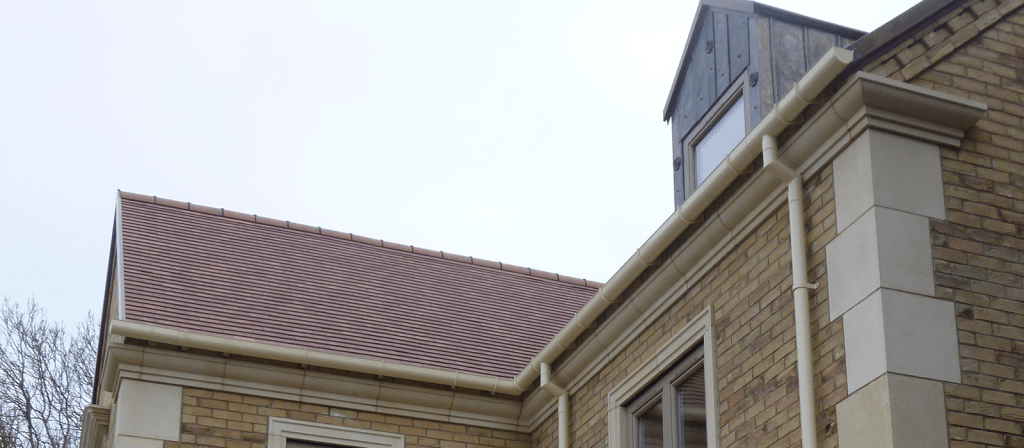
The Pros
- High capacity, reduces risk of overspill.
- Retains curved aesthetic with added depth.
- Excellent choice for steep roof pitches.
The Cons
- Bulkier, more visible than standard half round.
- Unnecessary in low-rainfall regions.
Best Applications
- Areas with frequent downpours.
- Large detached houses, warehouses, and schools.
- Steeply pitched roofs.
Gutter Centre Options
Moulded Gutters – Heritage Scale and Detail
Profile & Performance
Moulded gutters have bold, ornamental designs with deeper channels. They’re associated with historic and civic buildings where capacity and style are equally important.
- Flow rate: Cast iron moulded gutters can handle upwards of 2 litres/sec per metre, depending on profile.
- Jointing: Mechanical joints with bolts; requires skilled fitting.
The Pros
- Adds heritage authenticity to period projects.
- High water capacity for expansive roofs.
- Extremely durable in cast iron or aluminium.
The Cons
- Heavier and more expensive.
- Oversized look on small residential homes.
Best Applications
- Stately homes, churches, civic buildings.
- Large-scale restorations where authenticity is essential.
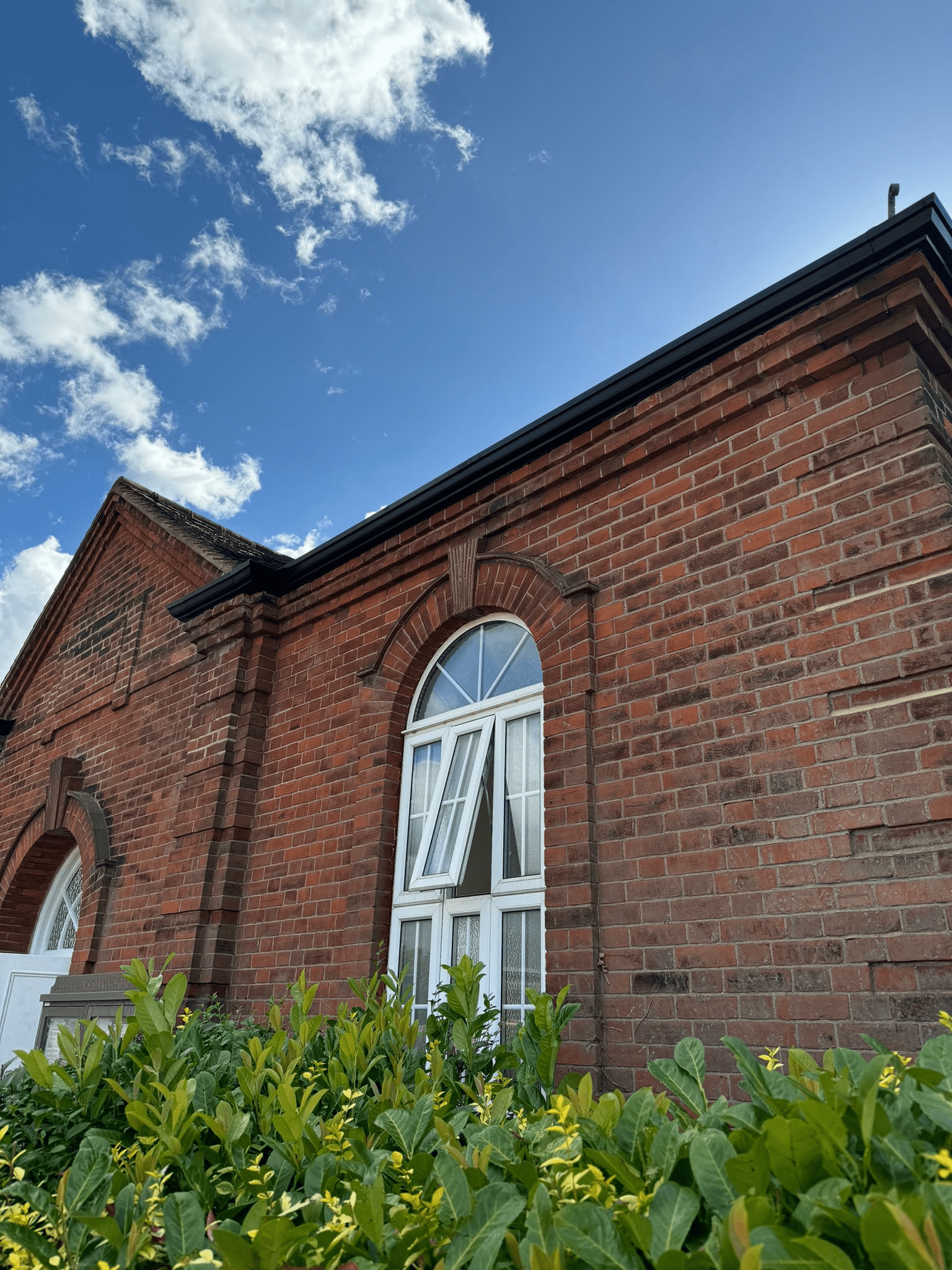
Gutter Centre Options
G46 moulded & H16 moulded cast iron gutters
Key Considerations Beyond Profile
When choosing a gutter, don’t stop at the shape. You should also assess:
Roof catchment area – Calculate litres/sec using the roof pitch factor to ensure capacity matches demand.
Outlet sizing – A gutter is only as good as its outlets; undersized downpipes can cause overflow even with the right profile.
Material choice – Cast iron for heritage durability, aluminium for modern resilience, uPVC for budget-friendly installs.
Maintenance demands – Profiles with sharp angles (box, ogee) can collect more debris, requiring regular checks.
Balancing Performance and Aesthetics
Choosing the right gutter profile is about striking the right balance:
Half Round: versatile, classic, heritage friendly.
Box: sharp, modern, high-capacity.
Ogee: decorative, ideal for period homes.
Deepflow: heavy rainfall and steep pitches.
Moulded: heritage scale and architectural detail.
At Gutter Centre, we stock all of these profiles in a wide range of materials and finishes, so you can find the perfect match for both your property’s style and its performance requirements. Whether you’re an architect specifying for a commercial project or a homeowner upgrading your roofline, our team can help you make the right choice.
